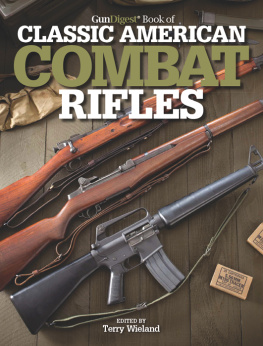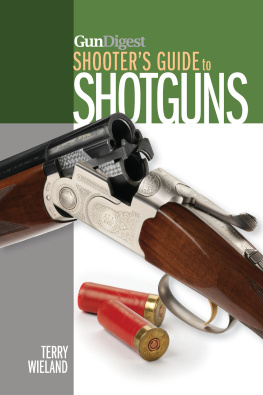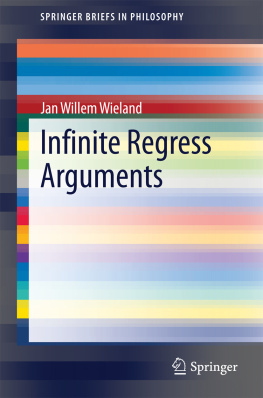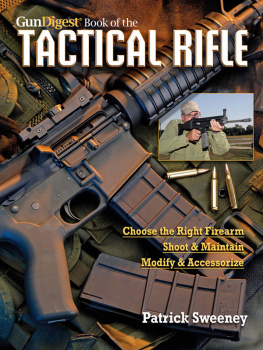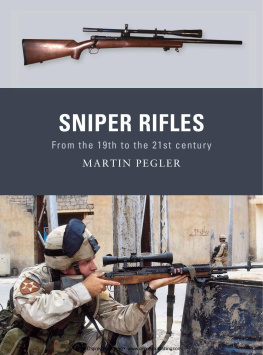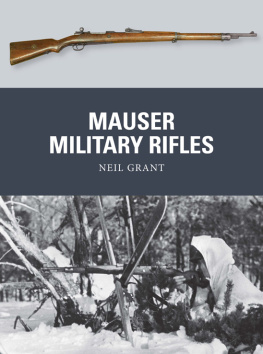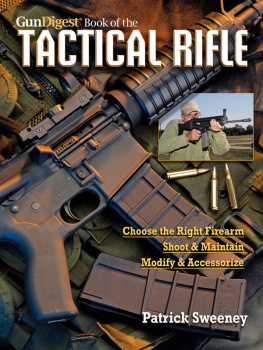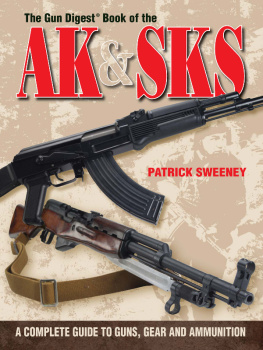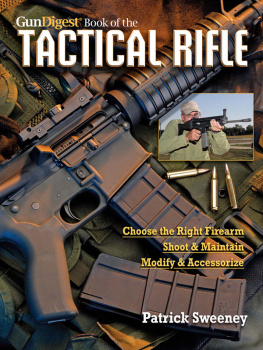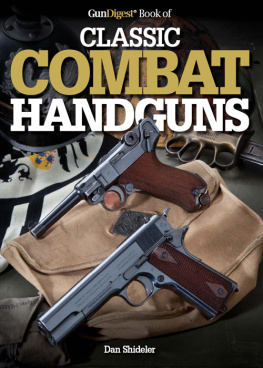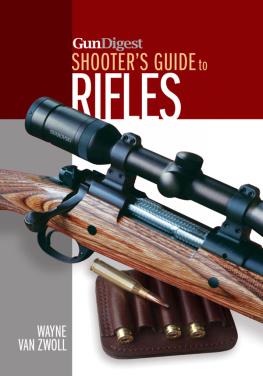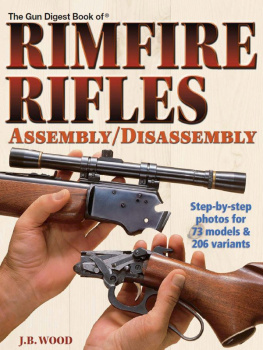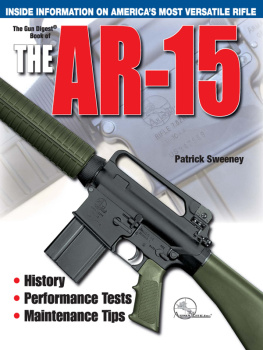Introduction
Welcome to the Gun Digest Book
of Classic American Combat Rifles
N o country in the world owes as much to the rifle as the United States. The rifle brought victory in the War of Independence, held the country together through a devastating Civil War, won the West, and made America a great power through the 20th century.
In many ways, Americas combat rifles firearms purchased by the government, and issued to our troops tell the story of the country itself. At any given time, the rifles used by the U.S. Army, Navy, and Marines reflect Americas progress toward technological and industrial might.
Today, there is more interest than ever before in the rifles Americans have used in combat throughout our 235-year history. We have rifles in use in historical reenactments of Revolutionary and Civil War battles, period rifles used in cowboy-action competitions, the current interest in the AR-15 platform as a hunting, defense, and target-shooting rifle for civilians, and, of course, the continued activity of arms collectors at all levels.
Since its first issue in 1944, the study of Americas combat rifles has been a major part of Gun Digest. We have published articles on the romance, design, performance, historical and technical significance, and of course the shortcomings of the many rifles which have been used by American troops in battle.
Most shooters recognize names like Springfield, Garand, ArmaLite, Sharps, and Spencer. But those are only the rifles that made it to the top and stayed there. Many other rifle designs were tested and adopted by the U.S. military, only to see limited use in action before sliding into historical oblivion. Other patterns bridged gaps between major technological advances.
One thing all of these rifles have in common is that, at their time, they were tremendously important to the men who used them, and they are all part of the history of the American combat rifle.

In this volume, we have gathered the best articles on American combat rifles published by Gun Digest during the last 66 years. Like GD itself, they are quite varied; some are historical accounts by academics in the field; others are first-hand looks by soldiers who used the rifles in combat. To us, one of the most interesting aspects of compiling a book like this is not only the many different points of view, but the chronological view points for example, looking at the rifles of World War II just as that war was ending and without the benefit of historical perspective and distant hindsight.

The history of Gun Digest extends back to a time when men living, shooting, and writing about it were personally acquainted with soldiers who lived through everything from the Civil War to the two World Wars, and could recount their experiences first hand. This gives the Gun Digest Book of Classic American Combat Rifles a different flavor than we would find in even the most comprehensive history written by one author.
Here, we have articles by some of the best-known and respected writers working in the field during the second half of the 20th century. On the Springfield rifle, we have Col. Townsend Whelen and Lt. Col. William S. Brophy, Jr.; on the rifles of World War II, Charles T. Haven, the noted Colt historian and technician at Johnson Automatics; on the M14, John Lachuk, one of the acknowledged fathers of the 44 Magnum.
From 1946, when he became editor, until 1984, when he retired, John T. Amber guided the editorial fortunes of Gun Digest with the enthusiasm of a shooter, the intense interest of an historian, and the editorial rigor of the best editor ever to work in the firearms field. Amber was interested in every aspect of firearms, but he loved rifles the best; he was escpecially interested in those little-explored nooks and crannies of rifle history.
When a writer came to Amber with an idea, he was given a forum and as much space as he needed to tell the story provided the story was worth telling. When the manuscript was submitted, Amber then applied standards of accuracy worthy of a college thesis. As a result, much of the material that appeared during his tenure could be reproduced, without apology, in a professional technical journal.
Even after John Ambers retirement, having an article published in Gun Digest remained a goal that writers, both professional and amateur, regarded as a mark of having arrived as a gun writer. Both Ambers demanding ways, and the professional commitment of his writers, is reflected in the articles published here.
Almost as interesting as what we have included is what was not covered in the pages of Gun Digest. By and large, Amber did not assign topics to writers; writers came to him with ideas, and Amber either approved them or not. This left his subject matter at the mercy of the interests of his writers, and this in turn was dictated by their own experience and the attractions of the rifles themselves.
The short-lived M14, for example, warrants only one article. For years, it was viewed in military terms as a stop-gap between the Garand and the AR-15; today, the virtues of the M14 are more widely recognized (as witness the success of Rugers Mini-14, a small rifle modeled on its action.) Similarly, there is little on the trapdoor Springfield, which is now enjoying renewed interest on several different levels.
One reason for this is that Amber was dealing with an annual publication. He was not and did not want to be in competition with more frequent periodicals such as the NRA magazines. He preferred to devote his editorial space to subjects that were not being covered elsewhere, including arcane and under-appreciated designs such as the Hall rifle, the Whitworth, or the rifles of James Paris Lee.
If a writer wanted to deal with a more main-stream topic that was already widely covered elsewhere, he needed to come up with a unique angle in order to interest John Amber. The result is a substantial body of firearms literature that concentrates on the obscure corners of firearms history, or gives radical views of more familiar topics.
For example, James Paris Lee is regarded by some as a second-tier rifle designer, none of whose designs made it to the big time as an American combat rifle. Ambers view (and that of writers Larry Sterrett and John Wallace) is that Lee was far ahead of his time, and both he and his designs deserve more recognition than they receive.
Lee qualified for this book (barely) by the fact that the U.S. Navy adopted his rifle and 6mm cartridge, albeit briefly, and we have reprinted three articles that both give Lee his due and are excellent examples of the scope and quality of Gun Digest articles over the past 66 years. It is this willingness to look beyond the obvious that made Gun Digest what it is, and gives this collection of articles a unique historical perspective on that subject of endless fascination, the American combat rifle.
Terry Wieland, Editor
THE BIRTH OF AMERICA
1973
Muskets, Powder
and Patriots


